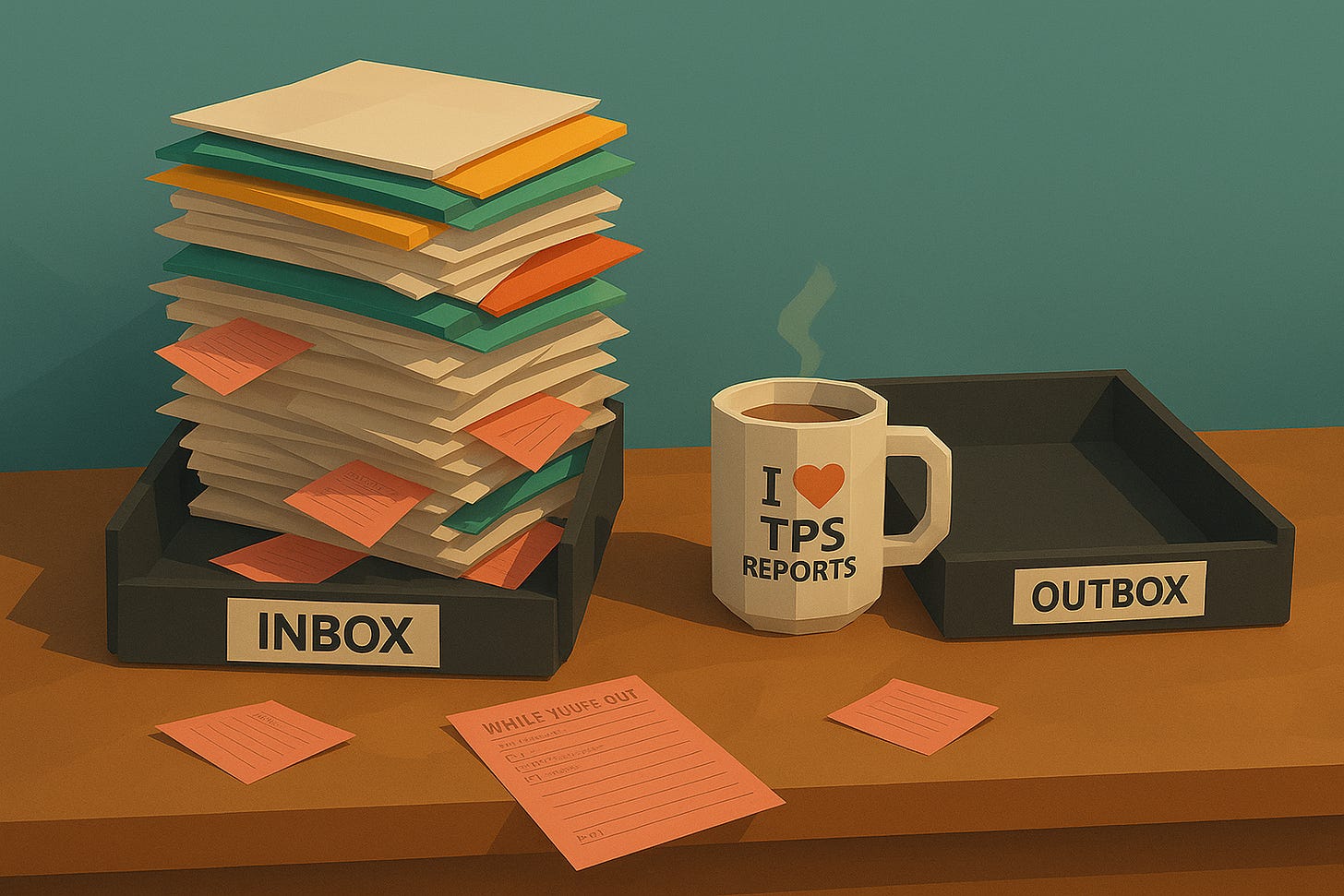Everything I learned in 30 years at Microsoft Part 1
Bias for Action
Add a little Bias for Action to your day and you will be successful, happy, and have whiter teeth.
I know — what does “Bias for Action” even mean? It’s right up there with “Customer Obsessed” and “Results-Oriented” in the pantheon of cringy corporate job descriptions. But of all the hours I’ve logged in training and doing, it’s one habit that’s stuck, and I’m better for it.
It took me a while. My default was to think things through, weigh the options, do the math, and try to get it right the first time. Pretty standard human behavior. But one of my first jobs introduced me to a different approach, and I can still see it in my head.
It was called the Inbox Exercise.
This was before email, Slack, or Teams. Your “inbox” was a literal metal tray. Once a day, your buddy from the mail room rolled past, dumped in a stack of memos, invoices, interoffice envelopes, and those pink “While You Were Out” slips, and scooped up whatever was in your companion “outbox.” Secretarial pools typed the memos. Pink slips tracked phone calls. The day ran on paper and staples.
The exercise was simple: touch each piece of paper once, and only once. Approve the invoice, toss the memo, file the form, or fulfill the request — then move on.
Simple in theory. In reality, humans love piles. We sort things into “I’ll get to it later” stacks, which soon become “I’m never getting to this” mountains. The piles get heavier, sprout side piles, and start whispering to you from across the desk. Then they move into your head and eat your focus.
These days the piles aren’t all made of paper. They’re Slack DMs, Teams pings, Google Docs “share” notifications, and 3,482 unread emails in your inbox (but hey, one is from LinkedIn congratulating you on a work anniversary, so that’s nice). The medium changed, but the mental weight is the same — every untouched task is another tab open in your brain.
Action does the opposite — it clears the desk and the brain, builds momentum, and makes the next thing easier to tackle. Be ruthless.
Beware the traps. One is holding off until you have all the information. You won’t. Maybe you’re running the numbers, building models, finalizing projections — but it’s easy to slip into analysis paralysis while you wait for “just one more” data point.
Another trap: it’s not “good enough” yet. You keep editing the draft, adding one more feature, tweaking the slide. Perfect is the enemy of good. Ship it. In software, iteration isn’t a flaw — it’s the way. Ship the Minimum Viable Product, get feedback, improve. Like evolution, the best survive and adapt.
Amazon put Bias for Action in its leadership principles. Jeff Bezos has this “two-way door” thing — most decisions can be reversed, so don’t waste months treating them like the irreversible ones.
When Satya Nadella took over as CEO at Microsoft, we were in trouble. The world was changing fast, and we weren’t. His rally cry was Growth Mindset — continuous learning, not clinging to the way we’d always done things. Bias for Action was core for that shift. You can’t learn if you’re standing still.
One of my first clients introduced me to an odd acronym: BAU — Business As Usual. We called it Boring Ass Usual. It’s the “how we’ve always done it” groove that eventually turns into a rut.
You don’t want that job. It will drain your energy and your ideas.
Bias for Action is the antidote. Try things before they’re perfect. Keep your inbox — physical or digital — light enough to actually be useful. And for the love of all that is holy, beware the piles. They’re sneaky. They’ll whisper to you. They’ll multiply. And one day you’ll look up and realize you’re working for them instead of the other way around.



Nice. I've had a tendency to be a file-keeper myself, but have gotten way better at this over the last 15 years or so. Running businesses and observing what they do has been really helpful, and it has been a journey for me. The thing about small business is that you really can't ever know all the things you need to know, so you have to get comfortable with uncertainty - I didn't really like that before, but it's just natural and normal now to navigate around it and make a few little oopsies while trying to make things better. Eventually, most things do get better with this iterative approach.
We are currently building a little software behind the scenes and using this approach all the way.